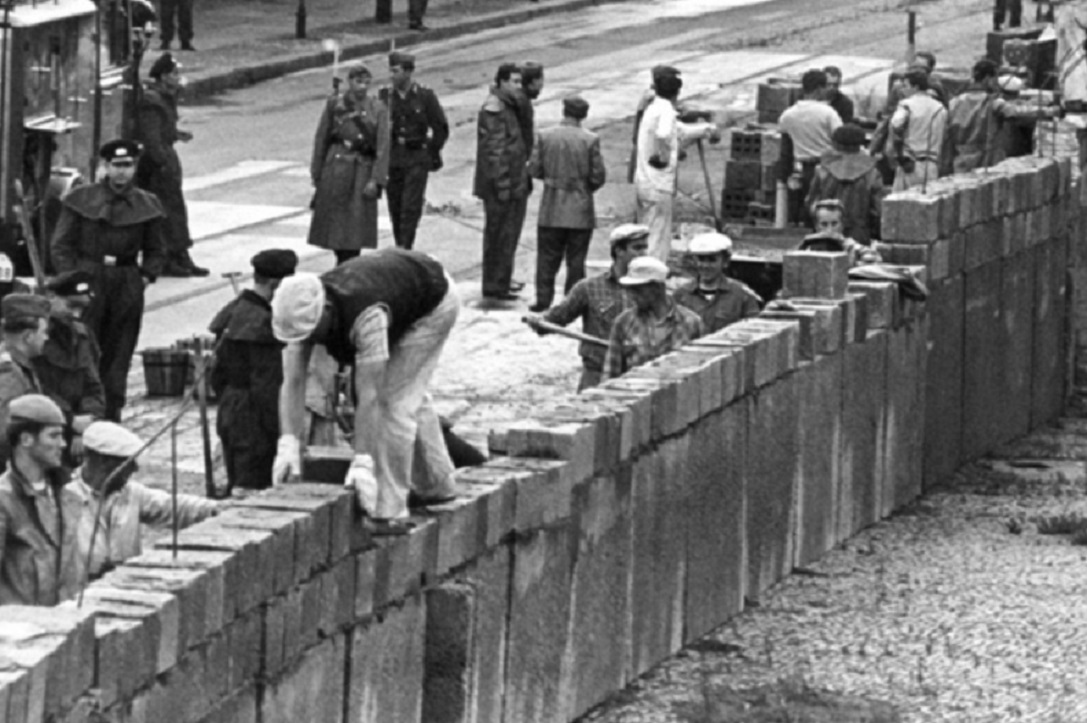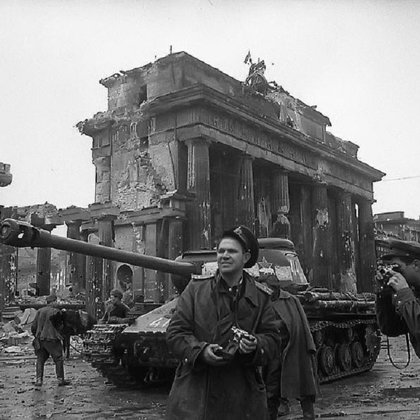THE END OF SOVIET EXPANSION IN EASTERN EUROPE (1945-1993) AND EASTERN BLOC WAS THE GROUP OF SOCIALIST STATES IN CENTRAL AND EASTERN EUROPE.
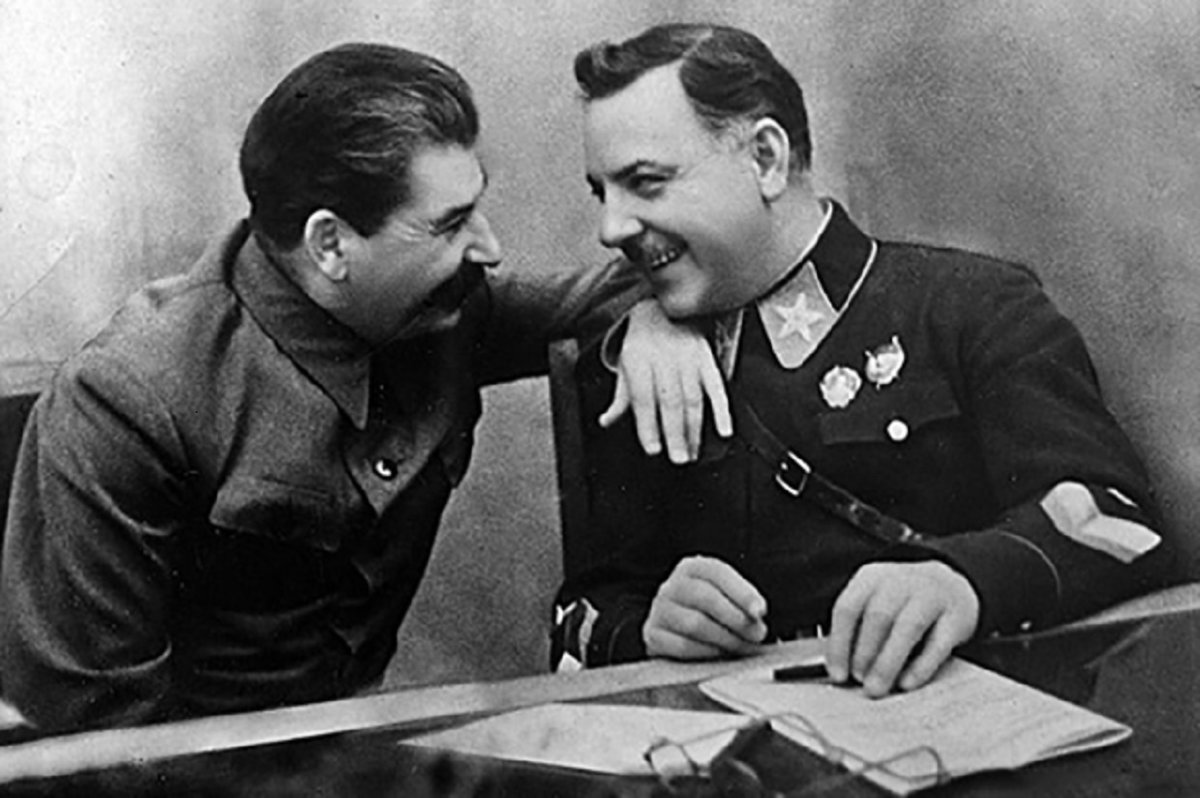 Joseph
Stalin and Kliment Voroshilov, was a prominent Soviet military officer
and politician during the Stalin era. He was one of the original five
Marshals of the Soviet Union (the highest military rank of the Soviet
Union), along with Chief of the General Staff of the Red Army Alexander
Yegorov (military), and three senior commanders, Vasily Blyukher, Semyon
Budyonny, and Mikhail Tukhachevsky.
Joseph
Stalin and Kliment Voroshilov, was a prominent Soviet military officer
and politician during the Stalin era. He was one of the original five
Marshals of the Soviet Union (the highest military rank of the Soviet
Union), along with Chief of the General Staff of the Red Army Alexander
Yegorov (military), and three senior commanders, Vasily Blyukher, Semyon
Budyonny, and Mikhail Tukhachevsky.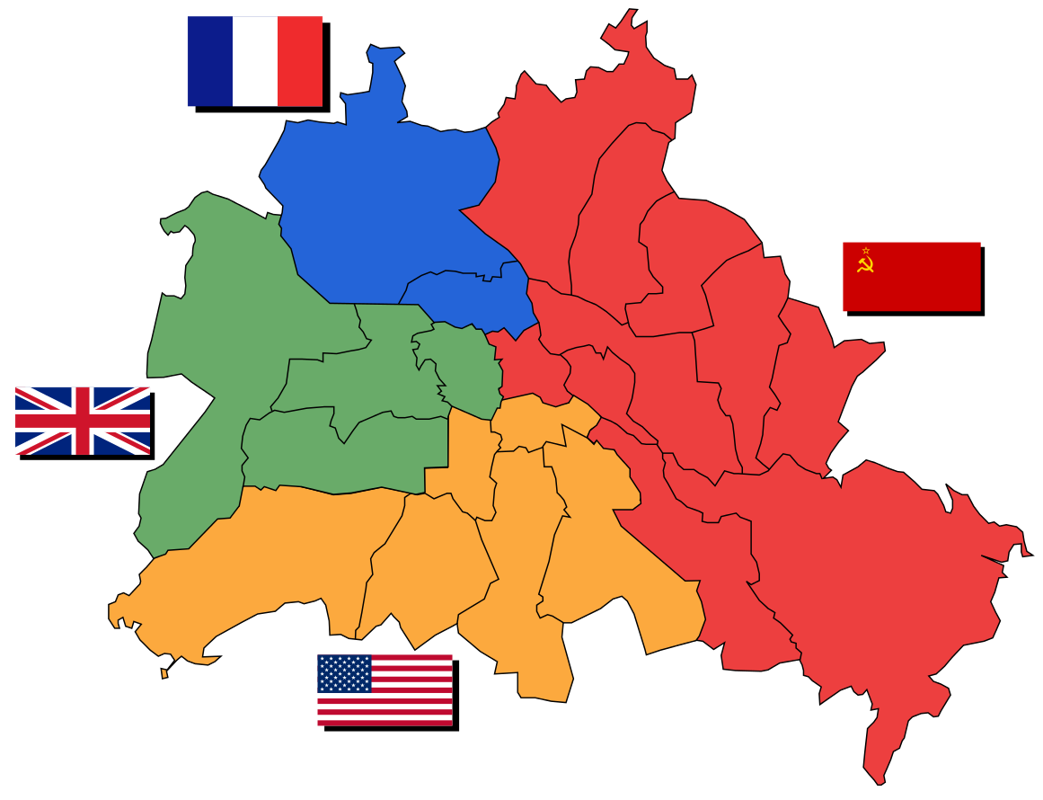 Map
showing sectors of occupation of Berlin.Allied-occupied Germany,British
(green), French (blue), American (orange) and Soviet (red) occupation
zones. Saar Protectorate (light blue) in the west under the control of
France.Berlin
is the quadripartite area shown within the red Soviet zone. Bremen
consists of the two orange American exclaves in the British sector.Upon
the defeat of Nazi Germany in World War II, the victorious Allies
asserted their joint authority and sovereignty over 'Germany as a
whole', defined as all territories of the former German Reich which lay
west of the Oder–Neisse line, having declared the extinction of Nazi
Germany at the death of Adolf Hitler.
Map
showing sectors of occupation of Berlin.Allied-occupied Germany,British
(green), French (blue), American (orange) and Soviet (red) occupation
zones. Saar Protectorate (light blue) in the west under the control of
France.Berlin
is the quadripartite area shown within the red Soviet zone. Bremen
consists of the two orange American exclaves in the British sector.Upon
the defeat of Nazi Germany in World War II, the victorious Allies
asserted their joint authority and sovereignty over 'Germany as a
whole', defined as all territories of the former German Reich which lay
west of the Oder–Neisse line, having declared the extinction of Nazi
Germany at the death of Adolf Hitler.
Soviet Union Takes Over Eastern Europe After World War II
After World War II, the Soviet Union extended its control into Eastern Europe. It took over the governments in Albania, Bulgaria, Czechoslovakia, Hungary, East Germany, Poland, Romania and Yugoslavia. Only Greece and occupied Austria remained free. The Baltic countries Estonia, Latvia and Lithuania were made into republics. Even Finland was partly controlled by the Soviets. The Communist Party was also strong in Italy and France.Cause for cold war,Soviet expansion in Eastern Europe was massive cause of the cold war. Over twenty million Russians died during the Second World War, so Stalin said he wanted to create a buffer zoneof friendly states around Russia to make sure that Russia could never be invaded again.Stalin was planning to take the whole of Eastern Europe. During the war, communists from the occupied countries of Eastern Europe escaped to Moscow and set up Communist governments in exile there, and as the Red Army drove the Germans back, it occupied large areas of Eastern Europe and, once the war was over the USSR never left the countries it had taken in the war, this occupation created Stalin desired buffer zone.This large and fast expansion of the USSR and its allies scared the USA and tension grew due to the fear of further expansion west toward America by the USSR. It caused conflict between the two superpowers because of the vast ideological differences. One of the main beliefs of communism is that capitalism is inherently bad and posed a threat to the working class. The communists view all capitalist nations as possible enemies. According to them, capitalism will eventually destroy itself and it is their duty to help it along. They refused cooperation between themselves and capitalist nations ideologically.The USSR’s expansion is in my opinion a very important, if not the most important cause of the cold war. It scared the USA and empowered the USSR, it caused the USA to seriously think about the threat of communism from the east and its own defences against communism, it caused immense secrecy between the two countries, America didn’t know where Russia was planning on going and Russia didn’t know if America was going to stop them.Soviet expansion in Eastern Europe,twenty million Russians died during the second world war, so Stalin said he wanted a buffer zone of friendly states around Russia to make sure that Russia could never be invaded again.Stalin was planning the takeover of Eastern Europe. During the war, Communists from the occupied countries of Eastern Europe escaped to Moscow and set up Communist governments in exile there. As the Red Army drove the Nazis back, it occupied large areas of Eastern Europe and Churchill in the so-called percentages agreement - agreed that Eastern Europe could be a Soviet "sphere of influence".The Eastern Bloc was the group of socialist states of Central and Eastern Europe, generally the Soviet Union and the countries of the Warsaw Pact.The terms Communist Bloc and Soviet Bloc were also used to denote groupings of states aligned with the Soviet Union, although these terms might include states outside.In the countries that the Red Army "liberated", communist-dominated governments took power. The Communists made sure that they controlled the army, set up a secret police force, and began to arrest their opponents. Non-Communists were gradually beaten, murdered, executed and terrified out of power. By 1949, all the governments of Eastern Europe, except Yugoslavia, were hard line Stalinist regimes.The Communists made sure that they controlled the army, set up a secret police force, and began to arrest their opponents. Non-Communists were gradually beaten, murdered, executed and terrified out of power. By 1949, all the governments of Eastern Europe, except Yugoslavia, were hard line Stalinist regimes.In 1946, in a speech at Fulton in the USA, Churchill declared that an Iron Curtain had come down across Europe, and that Soviet power was growing and had to be stopped. Stalin called Churchill's speech a "declaration of war". In 1947, Stalin set up Comintern which is an alliance of Communist countries designed to make sure they obeyed Soviet rule.Another massive cause for the start of the cold war was the Marshall plan.The United States became alarmed with the growing of communism in Europe and set up the Marshall Plan in order to control the spread of communism. The Marshall Plan was an economic support program funded by the United States. They gave money to the war torn democratic countries in order to rebuild their economy. They did not give money to the Soviet Union and any of its allies. The Unites States’ motivation for doing this was to provide themselves with trading partners in the east and to economically exclude the Soviet Union.The Second World War, the Marshal met in captivity methods of warfare during the Civil War, throwing German tanks on infantry and cavalry. This is what Marshal Zhukov wrote about Voroshilov: "He remained so dilettante in military matters until the end and never knew them deeply and seriously, but he held a high position, was popular, had a claim to consider himself completely military .In a critical time for the Soviet Union, when the Germans took Leningrad into a tight ring, Voroshilov stayed on as commander of the Leningrad front for less than a month. Stalin recalled Voroshilov and sent Zhukov to save the situation. Stalin understood that there was a mortal danger not only for the country, but also for him personally. Friendship of friendship, Voroshilov held high posts throughout the war, even Soviet people perceived this mediocre person as a symbol .In 1953-1960 Voroshilov held the post of head of the Presidium of the Supreme Soviet of the Soviet Union. Then he supported the anti-party group of Molotov, Malenkov, Kaganovich and Shepilov who joined them, who wanted to drop Nikita Khrushchev and make him Minister of Agriculture. Voroshilov's position is clear. Khrushchev encroached on the "holy" figure of Stalin, his close friend. Over time, Khrushchev said that Voroshilov in a conversation with him complained of "I feel like a beaten dog." Commenting on this, Khrushchev remarked: "And then I felt myself on the horse .From oblivion Voroshilov pulled Leonid Brezhnev. In 1972, the destroyed Voroshilov Museum was rebuilt, which was in the house where he was born .Little is known about Voroshilov's personal life. His wife was Jewish - Golda Gorbman. The couple did not have their own children, they brought up their adoptive son. Let us recall another episode of the pre-war life of Kliment Voroshilov. Somehow he had to dance at a reception with a high-ranking foreign person.
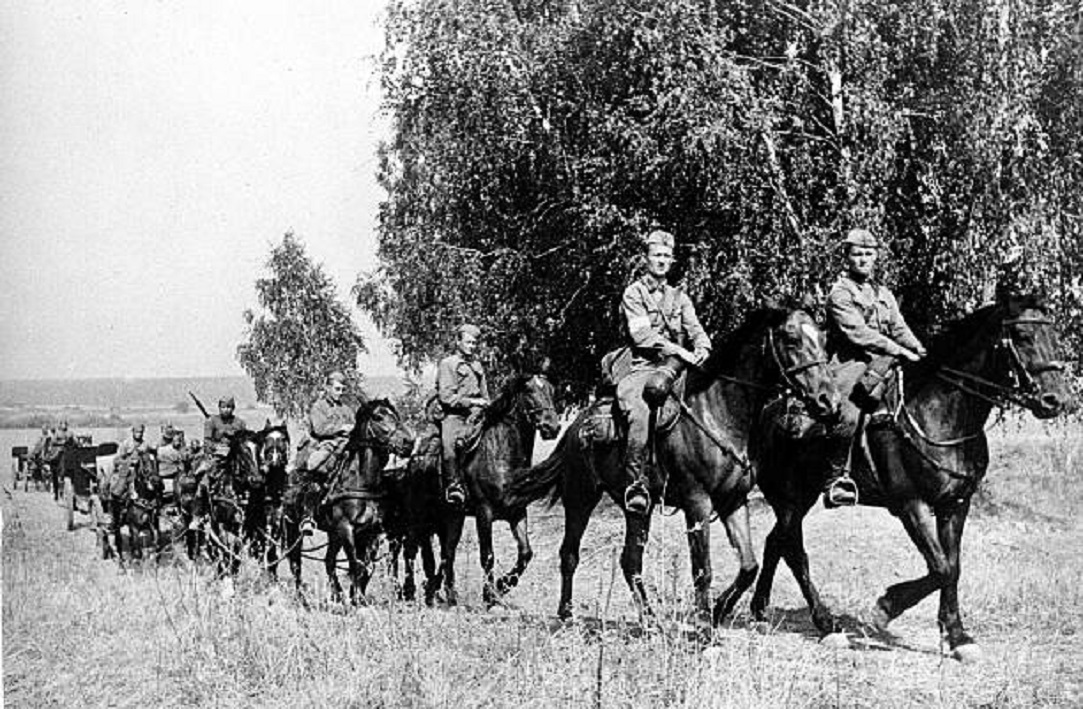 Poland,
17th September, 1939, Members of the Russian army on horseback near the
Polish on the march with their guns over their shoulders as they cross
the Polish frontier during the Soviet invasion at the start of World War
Two.The
Soviet invasion of Poland was a military operation by the Soviet Union
without a formal declaration of war. On 17 September 1939, the Soviet
Union invaded Poland from the east, sixteen days after Germany invaded
Poland from the west. Subsequent military operations lasted for the
following 20 days and ended on 6 October 1939 with the two-way division
and annexation of the entire territory of the Second Polish Republic by
Germany and the Soviet Union.
Poland,
17th September, 1939, Members of the Russian army on horseback near the
Polish on the march with their guns over their shoulders as they cross
the Polish frontier during the Soviet invasion at the start of World War
Two.The
Soviet invasion of Poland was a military operation by the Soviet Union
without a formal declaration of war. On 17 September 1939, the Soviet
Union invaded Poland from the east, sixteen days after Germany invaded
Poland from the west. Subsequent military operations lasted for the
following 20 days and ended on 6 October 1939 with the two-way division
and annexation of the entire territory of the Second Polish Republic by
Germany and the Soviet Union.
One of the most easily overlooked, yet momentous short wars of the 20th century was the swift-moving clash between the post-World War I Polish Republic and Russia’s brand-new Bolshevik regime of Vladimir Ilyich Lenin. Reaching a climax during the summer of 1920, the Russo-Polish War is often regarded as the final episode of the Russian Civil War. In fact, it was much more at once a reflection of the age-old enmity between two Slavic neighbors and a Marxist crusade bent on varying the torch of revolution into the heart of Europe. The campaign featured a remarkable cast of characters on both sides and mixed ferocious cavalry charges with early blitzkrieg tactics in quest of exceptional objectives.The roots of the war ran deep. For a century and a quarter, the once-formidable Polish nation was a political nonentity, having been dismembered by Prussia, Austria and Russia in the infamous partitions of 1772, 1793 and 1795. Three national insurrections had failed to dislodge the occupying powers; severe Germanization and Russification efforts, aimed at the destruction of the Polish language and culture, were imposed upon the population during the 19th century. Although such campaigns had little effect, by the turn of the century only the most optimistic Polish patriots could still dream of independence.Yet World War I provided exactly the right set of circumstances for the Poles. On November 6, 1916, Austria-Hungary and Germany, in a desperate bid to ensure the loyalty of their Polish populations, jointly agreed to the formation of a semi-autonomous ‘Kingdom of Poland.’ In Paris, France, Polish spokesmen beat the ears of Allied statesmen on behalf of an independent Poland, but none of the Western powers cared to antagonize their imperial Russian ally, which was opposed to such a move. In 1917, however, Russia had dropped into a violent vortex of chaos and revolution. Partly in consequence to that development, the Fourteen Points for peace drafted by United States President Woodrow Wilson included the creation of an independent Poland and its recognition as ‘an allied belligerent nation’ as of June 3, 1918. On October 7, 1918, with the Central Powers clearly on the brink of defeat, the Regency Council in Warsaw declared Polish independence. After the guns of war fell silent on November 11, the three torn pieces of the Polish nation were triumphantly reunited.The representatives of France, Great Britain, Italy and the united States met in the mirrored halls of Versailles in 1919 to dismember the German and Austro-Hungarian empires and set the world right. Russia, the erstwhile ally that in November 1917 had established the world’s first Communist government, was shunned by the Western Allies; Lenin’s decision to make a separate peace with Germany at Brest-Litovsk in the spring of 1918 would not be forgiven just then. Moscow’s absence form the Versailles conference later proved to be a costly blunder. While the Allies were able to produce a tentative settlement for Poland’s western frontiers, they had no means of establishing any agree-upon border between the new Polish state and the Russian colossus.The resurgent Poles, meanwhile, quickly established a Western-style parliamentary government and chose a 51-year-old romantic, a conspiratorial and avidly Russophobic military hero named Jozef Klemens Pilsudski as chief of state. Pilsudski, a longtime member of the Polish Socialist Party’s right wing, had always placed the achievement of Polish independence ahead of the social reforms advocated by some of his more ideological colleagues. As a young man he had felt the brutality of tsarist justice, spending five years in Siberian exile for revolutionary activity. During World War I, he organized and commanded a Polish legion under Austrian auspices on the Eastern Front, convinced that Russia was the chief enemy of his country’s independence. He soon became disillusioned with vague Austrian promises in favor of Polish independence, however, and refused to take an oath of allegiance to the Central Powers. Arrested and imprisoned in Magdeburg for two years, he was released on November 10, 1918, and returned home to be acclaimed as a national hero.Pilsudski possessed an iron will and a quick mind. He clearly regarded the new Polish army as his special province, and himself as the guarantor of independence. The republic’s forces, still motley and ill-equipped, would soon be put to the test as the commander in chief turned his attention eastward.The re-establishment of Poland’s pre-partition 1772 frontiers, which included substantial parts of the Ukraine and Belorussia (‘White Russia,’ now Belarus), was a matter of top priority for Pilsudski. To accomplish that goal, the veteran revolutionary resurrected the old Polish idea of federalism, first championed in the Middle Ages by the kings of the Jagiellonian dynasty. Put simply, the plan called for an East European federation consisting of the independent republics of the Ukraine, Belorussia and Lithuania, bound together with Poland. The latter nation would, according to the Pilsudski scheme, play the leading role.This incredibly ambitious designed was destined to disintegrate almost immediately. The Lithuanians, former partners in the old Polish kingdom, were intensely nationalistic, after their own long submergence in the Russian empire, and they zealously sought to protect their own newly proclaimed independence in the wake of the tsar’s fall. They wanted no part of Pilsudski’s federalist notions. The Ukrainians, while keenly desiring independence, were naturally suspicious of the Polish leader’s motives, realizing how much of the Ukraine was intended for incorporation within the Polish state. The Belorussians, for centuries caught in the crossroads of Roman Catholic Poland and Orthodox Russia, had no outstanding national consciousness yet and were frankly interested in neither in independence nor in Pilsudski’s proposals of union. The Polish argument that none of those three nations could stand next to Russia alone fell on deaf ears. To all three of the potential federal members, it appeared that they might be exchanging the former Russian yoke for a Polish one.The Western Allies, too, were decidedly against Pilsudski’s plans. Both Britain and France accused the Polish chief of state of imperialism at Russia’s expense, and they urged Poland to limit its eastern frontiers to the farthest extent of clear-cut Polish ethnicity. As for Russian Bolshevism, London and Paris saw that not as a threat, but a temporary disease, soon to be destroyed by the anti-Communist White forces, which the Allies supported in the ten-raging Russian Civil War.The new Bolshevik government, besieged by a multitude of armies commanded by a politically diverse collection of generals ranging from tsarist aristocrats to disillusioned socialists to provincial warlords, had its hands full at the time. The White forces of Generals Anton Denikin, Nikolai Yudenich and Piotr Wrangel, and Admiral Aleksandr Kolchak, supported by Western and Japanese armies and funds, had to be stopped. The Reds had little time in 1918 to worry about Polish schemes to expand on Russia’s western periphery.Lenin’s dynamic associate Leon Trotsky organized the Red Army to meet the White threat. By using powerful idealism awakened in the revolution, and invovling fears that the landowning aristocrats might return to power, Trotsky built a formidable force of workers, peasants and ex-soldiers of the old imperial army, complete with a tough cavalry corps, to protect the Bolshevik regime. Throughout 1918and 1919, the Reds turned the tables on their foes, one by one.At that moment of chaos and civil war in Russia, the Poles struck. In February 1919, Pilsudski sent his troops northeast, occupying as much territory as possible for the purpose of presenting a fait accompli to the Allied Supreme Council. That body would then be forced to recognize Poland’s expanded eastern boundaries.The Polish forces encountered little resistance and advanced rapidly, soon capturing Wilno (Vilius), a historically Polish city, from the Lithuanians, who had proclaimed it the capital of their new republic. By the autumn of 1919, the Polish red-and-white banner was flying over large sections of Belorussia and the western Galician part of the Ukraine was well.Pilsudski ordered a halt at that point, his intelligence service having informed him that the Whites under General Denikin were pressuring Moscow from the south and could possibly capture the seat of the Bolshevik regime. The Poles surmised that a White government bent on the reconstruction of the old empire would prove more recalcitrant than the hard-pressed Bolsheviks. Denikin was willing to allow Poland to exist up to the borders of Privislanski Kaj, a former Russian province carved from Poland, in exchange for Polish participation in an anti-Communist crusade, but since those terms would deprive Poland of half the territory Pilsudski wanted, the Polish commander in chief rejected that and other White offers. Although Pilsudski secretly negotiated with the Reds for an acceptable eastern frontier, he was by no means convinced of Lenin’s sincerity.In December, the British foreign minister, Lord George Nathaniel Curzon, proposed a frontier that roughly corresponded to the ethnic limits of Poland but failed to include the two predominantly Polish cities of Lwow and Wilno. Ironically, the ‘Curzon Line,’ as it was later dubbed, was to become the eastern border of post-World War II Poland. The border proposed by the British, although never meant to be a final frontier, was rejected by the Poles, for they had already pushed beyond it.When it became evident to Pilsudski that the Bolsheviks had turned the tide in the civil war and the Whites appeared doomed, Polish-Soviet negotiations were broken off and the Poles prepared for another thrust into Belorussia and the Ukraine. Such an action, the Poles knew, would be tantamount to a full-blown anti-Soviet war.
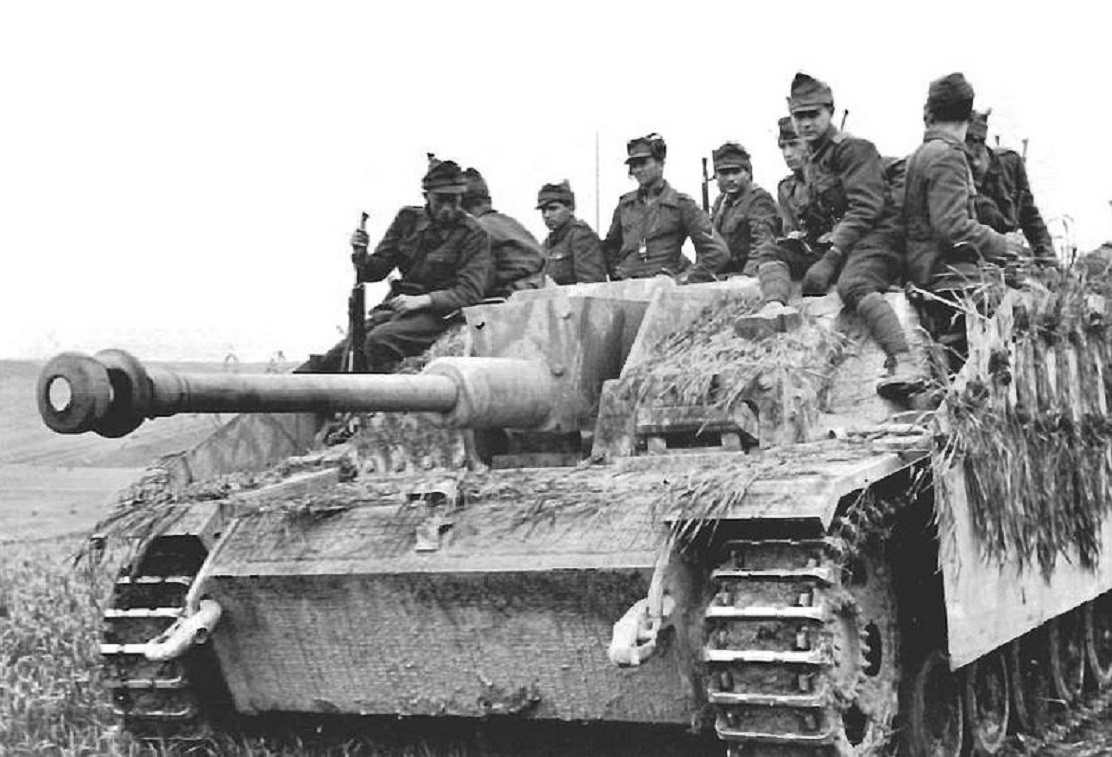 Accordingly
at the end of September Horthy sent a secret mission to Stalin to seek
an Armistice. Stalin was not unreceptive but called for a return to
Hungary's 1938 borders and for her to declare war on Germany. Informed
by the SS Intelligence of what was in the offing Hitler again intervened. For Operation Panzerfaust , he
called upon the man whose career had already seen him free Mussolini
and try to kill Tito - Otto Skorzeny. In October Skorzeny kidnapped
Horthy's surviving son the same day he announced the armistice. The
armistice was repudiated and Skorzeny would drive 4 King Tigers into
Buda castle to capture Horthy. He would later be forced to abdicate in
exchange for a promise that his sons life would be spared.
Accordingly
at the end of September Horthy sent a secret mission to Stalin to seek
an Armistice. Stalin was not unreceptive but called for a return to
Hungary's 1938 borders and for her to declare war on Germany. Informed
by the SS Intelligence of what was in the offing Hitler again intervened. For Operation Panzerfaust , he
called upon the man whose career had already seen him free Mussolini
and try to kill Tito - Otto Skorzeny. In October Skorzeny kidnapped
Horthy's surviving son the same day he announced the armistice. The
armistice was repudiated and Skorzeny would drive 4 King Tigers into
Buda castle to capture Horthy. He would later be forced to abdicate in
exchange for a promise that his sons life would be spared.
How did the Soviets treat Germans after WWII?
Following World War I, the victors created nearly a dozen new nations in Eastern Europe. These nations were supposed to become democracies, but they would need time to do this. In the 1930s, time ran out. Ethnic differences, political corruption, and finally the Great Depression undermined the infant democracies.During World War II, Eastern Europe was caught between Nazi Germany and the Soviet Union. Several Eastern European countries Hungary, Romania, and Bulgariaaligned themselves with the Nazis. Nazi troops overran most of the rest of Eastern Europe in the first years of the war. (Troops of Fascist Italy took over Albania.) Some Eastern Europeans joined resistance groups to fight the Nazis. The strongest forces emerged in Yugoslavia and Albania, led by communists. By the war's end in 1945, the Soviet Union's Red Army occupied all of Eastern Europe (except Yugoslavia and Albania).Shortly before Germany surrendered, U.S. President Franklin D. Roosevelt, British Prime Minister Winston Churchill, and Soviet communist dictator Joseph Stalin met at Yalta, a resort in the Soviet Union. The Allied leaders discussed terms for the German surrender and the future of Eastern Europe.ll Eastern European countries established a social security system. It included government health insurance, welfare services, and pensions. In most countries, men could retire as early as 60; the retirement age for women was generally a few years earlier.The rate of violent crime was low. The streets were safe. But crimes of corruption, such as bribery, flourished. People paid off officials and even shop clerks to get ahead in line or get an item in short supply. Theft was a problem for items that were in short supply. For example, car owners routinely removed their windshield wipers when they parked their cars. Otherwise, the wipers might be stolen and replacement parts were hard to find. Eastern Bloc media and propaganda was controlled directly by each country's Communist party, which controlled the state media, censorship and propaganda organs. State and party ownership of print, television and radio media served as an important manner in which to control information and society in light of Eastern Bloc leaderships viewing even marginal groups of opposition intellectuals as a potential threat to the bases underlying Communist power therein.Circumvention of dissemination controls occurred to some degree through samizdat and limited reception of western radio and television broadcasts. In addition, some regimes heavily restricted the flow of information from their countries to outside of the Eastern Bloc by heavily regulating the travel of foreigners and segregating approved travellers from the domestic population.It depended on rank much of the time. The Russians were intimidated by rank. Most General officers were treated fairly, with the exception of Gen Wiedling who was the defender of Berlin and FM von Saucken, who was a true Prussian aristocrat, was crippled for life in Lubyanka prison. The Russians hated aristocracy. SS General Wilhelm Mohnke, who was the leader of Hitler’s bodyguard, spent ten years in solitary confinement. FM von Paulus, the leader of the 6th Army in Stalingrad was a broken and embittered man who converted to Communism. Gen von Seydlitz, the German hero of Demyansk, also converted to Communism and turned on the Germans in the last year of the war, using his acumen to assist the Soviets in defeating the Germans and training Russian and Free German men to wear German uniforms and confuse the Germans with false orders.Stalin declared that German prisoners would be held as slave labor until the Soviet Union was repaired by their efforts. German prisoner were often made to parade by the thousands through Red Square. After the parade there would be hundreds of dead prisoners littering the streets, dead from exposure, hunger, exhaustion or beatings.Average soldiers were treated poorly. There are some excellent accounts of life under the Soviet PoW system in Hans von Luck’s book “Panzer Commander” where he was captured outside Halbe. Soviet guards pulled his gold teeth out while he was force-marched to the PoW camp. There is a much better and longer description of life under the Soviet PoW system in Lt Bidermann’s excellent book “In Deadly Combat”. He was with the 132nd Infantry Division captured in the Kourland Peninsula after the German surrender.SS soldiers were singled out for particular punishment. SS soldiers had their blood group tattooed under their left arm and this is how they were identified by the Soviets. When capture appeared imminent, SS soldiers would cut the flesh out with a knife or put a pistol under their arm and fire or have someone burn or shoot it off. Few SS soldiers returned to Germany.Of the 90,000 German soldiers captured at the surrender of Stalingrad, 50 percent would be dead within a month. Only about 5000 Stalingrad soldiers ever returned home from Soviet PoW camps. Many German units disappeared completely after surrender. After the key battle of velikiye luki 11,000 Germans surrendered. The officers were hung in the main square. Five soldiers made it back to Germany after the war. Not a single soldier of the rear guard of the German 6th Army Nebelwerfer Unit that held up the Russians for a day, allowing the 6th Army to surrender to the Americans, ever returned to Germany. Very few of the Germans army that surrendered after the Battle of Budapest ever made it home.It’s important to note that under the Germans, as much as 50 percent of all Soviet prisoners died; under the Soviets about 40 percent of all German prisoners died, so who was worse? On the surface it seems the Germans were worse but because of the punishment to be suffered by repatriated Soviet prisoners due to Stalin Order 270, many Soviet prisoners committed suicide when told they would be repatriated after the war. An American account tells of an American officer telling a group of Soviet prisoners that they are to be repatriated to Soviet control, then watching in horror as they committed suicide in front of him. In the summer of 1944 the Soviet Union launched Operation Bagration, a large-scale, complex offensive against the Nazi invaders in Belarus, Poland and the Baltic republics. This vital Soviet offensive was launched just after Allied troops had landed in Normandy, and it is symptomatic of the lack of public knowledge about the war in the East that whilst almost everyone has heard of D-Day, few people other than specialist historians know much about Operation Bagration.Operation Bagration (named after a Georgian prince in the war against Napoleon 130 years earlier) was not just one of the largest military offensives of the war, it was one of the most sophisticated. On 19 June 1944, Red Army partisan units, operating behind German lines, attacked transport and other Wehrmacht supply lines; two days later the Soviets launched massive air attacks; and then on the 23rd (one day after the third anniversary of the German invasion) the Red Army moved forward under cover of darkness.Soviet advance caught the Germans by surprise. Once again, the Soviet technique of ‘maskirovka’ (deception) had worked. The Soviets pushed forward in powerful spearheads leaving enemy units isolated behind them a tactic that was made all the more effective because of a tactically disastrous decision Hitler had made. The German leader had ordered the soldiers of Army Group Center to stand firm and inflexible in the face of any Soviet advance.Hitler’s directive of 8 March 1944 had announced that ‘feste Plaetze’ (fortified places) should be the core of the German defense. The idea was that the Soviets would advance past these fortifications, which would, Hitler said, “fulfill the function of fortresses in former historical times”. The commander of the German Ninth Army, General Jordan could scarcely believe the nature of the order he had been given. “Ninth Army stands on the eve of another great battle”, he wrote, “unpredictable in extent and duration the Army believes that, even under the present conditions, it would be possible to stop the enemy offensive, but not under the present directives which require an absolutely rigid defense”.“Hitler’s orders to hold firm were totally disastrous”, confirms military historian Antony Beevor. “He refused to allow his generals any flexibility or leeway which was totally contrary to all the precepts and the teaching of the German general staff but because Hitler so distrusted his generals he wanted to control everything and that was basically the undoing of the German army”.In contrast, due to the efforts of Konrad Adenauer, German prisoners started coming home by 1954 and were received as heroes. When the trains arrived, the German prisoners were greeted with thronging, cheering crowds, brass bands, food, wreaths and so on. They called the war and time afterwards “The Lost Years”.Like Germany, Hungary had lost much at the end of the First World War. The Treaty of Trianon stripped her of around two thirds of her territory and population. Further, her status had declined if anything more than that. She had had much more power as half of the dual Austro-Hungarian monarchy than her population strictly merited and had been a multi-ethnic state with a millennia of history in which Magyars were a slim majority. She was now reduced to a small rump, having lost her frontier regions and substantial Magyar populations to new creations such as Yugoslavia and Czechoslovakia, rivals such as Romania and hemmed in by the Little Entente of those countries, backed by France.As in Germany the political situation in the immediate post-War period was chaotic, but after a short-lived Communist regime and a Romanian invasion a stable regime was eventually formed under Admiral Miklós Horthy - the last commander of the Austro-Hungarian navy. This was formally a monarchy, but neither the Little Entente nor the victorious allies would permit a Hapsburg Restoration. Accordingly Horthy took the title of Regent and Hungary became a Monarchy without a Monarch, ruled by an Admiral without a Navy - or even a coastline.It was more or less inevitable that Hungary would end up aligned with the discontented states such as Germany and Italy that wished to revise the post-war settlements. As such she would gain a slice of Czechoslovakia in the aftermath of the Munich settlement (First Vienna Award) and even fight a brief border war with Slovakia. Nevertheless she had no quarrel with Poland and had enjoyed previous good relations. So she not only remained neutral when war broke out but refused Germany permission to cross Hungarian territory to engage Poland - thus allowing Polish units to escape into Hungary and Romania.What she really wanted however was Transylvania, which currently belonged to the Romanians. They however were in a perilous position after the collapse of their French ally in June 1940 and had already ceded territory to Stalin and to Bulgaria. The Second Vienna award would give Hungary less than what she had first asked for, but still a substantial area with a significant Romanian population.Tragic Fate: Parade of 57,000 German prisoners of war in the streets of Moscow march to Moscow after defeat at Belarus during “Operation Bagration”.Troops of German 4th Army after being captured at Minsk in Belarus being marched through the streets of Moscow Russia 17 July 1944.In the summer of 1944 the Soviet Union launched Operation Bagration, a large-scale, complex offensive against the Nazi invaders in Belarus, Poland and the Baltic republics. This vital Soviet offensive was launched just after Allied troops had landed in Normandy, and it is symptomatic of the lack of public knowledge about the war in the East that whilst almost everyone has heard of D-Day.
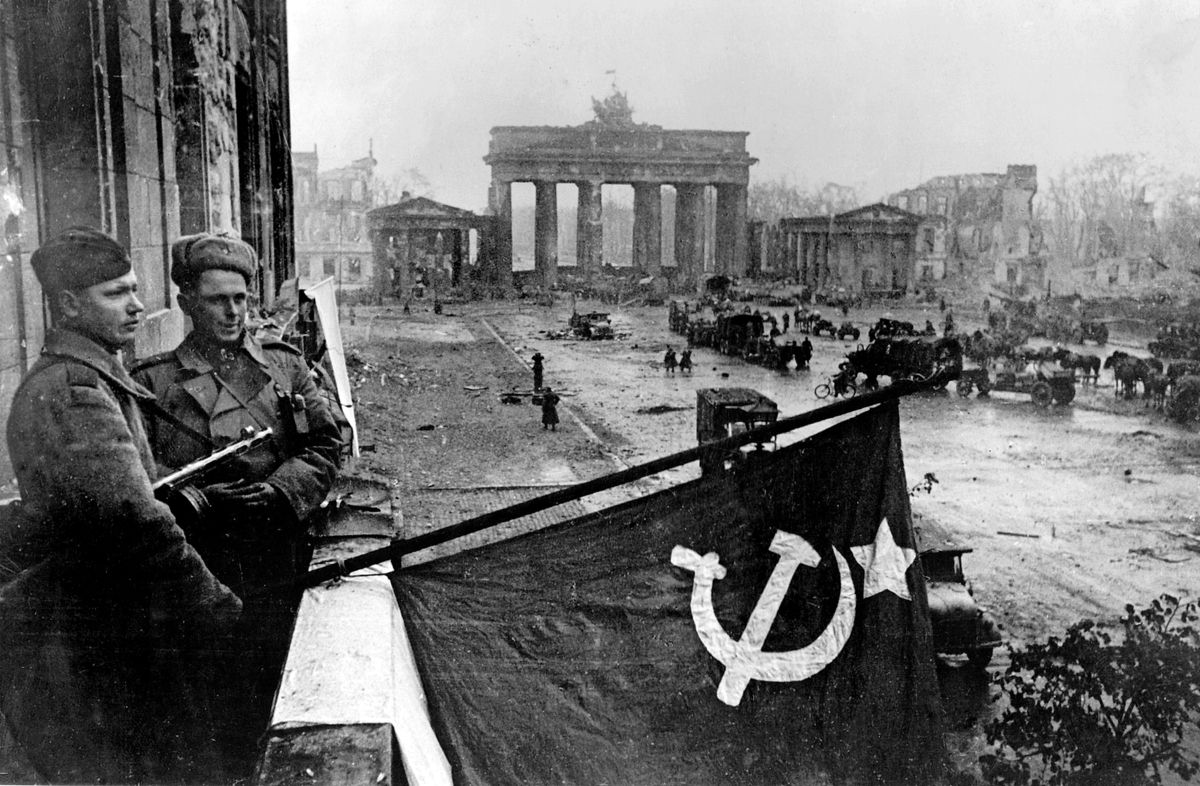 Victorious
Red Army soldiers in Berlin, on May 2, 1945 in Berlin shows a Soviet
soldier raising the Red Flag over the Reichstag, after the Allied forces
entered the city, ending World War II. The photo would become both the
defining image of the Red Army's victory over Nazi Germany.
Victorious
Red Army soldiers in Berlin, on May 2, 1945 in Berlin shows a Soviet
soldier raising the Red Flag over the Reichstag, after the Allied forces
entered the city, ending World War II. The photo would become both the
defining image of the Red Army's victory over Nazi Germany.
Soviet expansion in Eastern Europe was massive cause of the cold war. Stalin said he wanted to create a buffer zone of friendly states around Russia to make sure that Russia could never be invaded again.The Red Army was recruited exclusively from among workers and peasants and immediately faced the problem of creating a competent and reliable officers’ corps. Trotsky met this problem by mobilizing former officers of the imperial army such officers served in the Red Army and with but few exceptions remained loyal to the Soviet regime. Political advisers called commissars were attached to all army units to watch over the reliability of officers and to carry out political propaganda among the troops. As the Russian Civil War continued, the short-term officers’ training schools began to turn out young officers who were regarded as more reliable politically.On May 5, 1955, the American, French, and British forces formally ended their military occupation of West Germany, which became an independent country. Four days later, West Germany was made a member of NATO. For U.S. politicians, this was an important step in the defense of Western Europe. Despite the reluctance of some European nations, such as France, to see a rearmed Germany, even as an ally, the United States believed that remilitarizing West Germany was absolutely vital in order to maintain a good defensive system and stop any Soviet expansion. The Soviet response was immediate. On May 14, 1955, the Soviet Union established the Warsaw Pact, a military alliance between Russia and its Eastern European satellites, including East Germany. Germany began to arm themselves again with better equipment.The Eastern Bloc refered to a group of communist states in Central and Eastern Europe, generally understood to be the countries of the Warsaw Pact.During the immediate postwar period, the Soviet Union first rebuilt and then expanded its economy, with control always exerted exclusively from Moscow. The Soviet Union consolidated its hold on Eastern Europe, supplied aid to the eventually victorious communists in China, and sought to expand its influence elsewhere in the world. This active foreign policy helped bring about the Cold War, which turned the Soviet Union's wartime allies, Britain and the United States, into foes. Within the Soviet Union, repressive measures continued in force; Stalin apparently was about to launch a new purge when he died in 1953.In 1946 Andrey Zhdanov, a close associate of Stalin, helped launch an ideological campaign designed to demonstrate the superiority of socialism over capitalism in all fields. This campaign, colloquially known as the Zhdanovshchina ("era of Zhdanov"), attacked writers, composers, economists, historians, and scientists whose work allegedly manifested Western influence. Although Zhdanov died in 1948, the cultural purge continued for several years afterward, stifling Soviet intellectual development.Russia rebuilt quickly after World War II and rose to be one of the world's two superpowers through its moves in Eastern Europe, postwar modernization of industry and the seizure of German factories and engineers as booty. The postwar Five-Year plans focused on the arms industry and heavy industry at the expense of consumer goods and agriculture. Describing Stalingrad in 1949, John Steinbeck wrote, "Our windows looked out on acres of rubble, broken brick and concrete and pulverized plaster and in the wreckage the strange dark weeds that always seem to grow in destroyed places. During the time we were in Stalingrad we grew more and more fascinated with this expanse of ruin, for it was deserted. Underneath the rubble were cellars and holes, and in these holes people lived. Stalingrad was a large city, and it had apartment houses and many flats, and now there was none except for new ones on the outskirts, and its population his to live some place. It lives in the cellars of the buildings where the buildings once stood.Under the communist systems of Eastern Europe, the "collective interest" of the people, as determined by the communist party, overcame any claims to individual rights. Thus, the government harshly suppressed freedom of speech, press, and assembly. The government licensed newspapers, other media, and even churches in order to control them. The practice of religion was discouraged.The communist regimes established civil and criminal court systems. In most cases, the trial courts consisted of one professional judge and two citizen "assessors," not specifically trained in the law. Public prosecutors acted as defenders of the state, public defenders, and prosecutors of crimes. They, like the judges and assessors, were accountable only to the government officials who appointed them. The officials, of course, belonged to the communist party.A fair trial might take place if the communist party had no interest in it. But otherwise the system was stacked against those accused of crimes. Defendants could be charged with political or economic crimes. The crime of "economic sabotage" included such offenses as failing to achieve a factory production quota. The courts vigorously prosecuted anyone dissenting against communist-party rule. As in the Soviet Union, Eastern European countries weeded out those suspected of disloyalty. This happened in "show trials," where the government forced defendants to confess their supposed crimes.All the Eastern European countries established extensive secret police organizations. Soviet "advisors" occupied key command positions in each of them. Moreover, secret police agents from the Soviet Union worked throughout Eastern Europe and could arrest anyone.All the Marshall plan did was anger the USSR, it made them hate America and all her allies. It increased tension massively by showing the two countries that either could be attacked at any time, and it also showed that the USA would stop at nothing to stop the spread of communism. The USSR criticised the USA and said that all they wanted to do was control and enslave Eastern Europe by putting them in to the USA’s debt.Compared to the expansion of Russia, the Marshall plan is a large factor resulting in the cold war, the Marshall plan is still vastly important as a cause of the cold war, but without the expansion of Russia it would not be necessary, but it was important enough to scare and enrage Stalin. It resulted in Stalin forming COMECON the USSR’s answer to Marshall Aid; it was a plan to give finical aid to all communist states that felt the threat of capitalism. This plan in turn angered America thus starting a cold war.In conclusion that the huge expansion of Russia was the main and most important cause of the cold war it had a massive impact, it scared the west and forced the Americans to tackle the threat of communism head on. The Marshall plan was simply the little nudge that sent Russia and America in to the cold war. The expansion was the main factor; it forced the capitalist west to evaluate their defences against the threat of communism. The expansion built up a time bomb of tension and conflict. The Russian expansion, in my view, started the cold war and was the main cause for tension and conflict; it destroyed the shaky relationship between the USSR and America and made Russia the biggest superpower in the world. And that is why I believe that the Russian expansion is the main cause of the cold war.
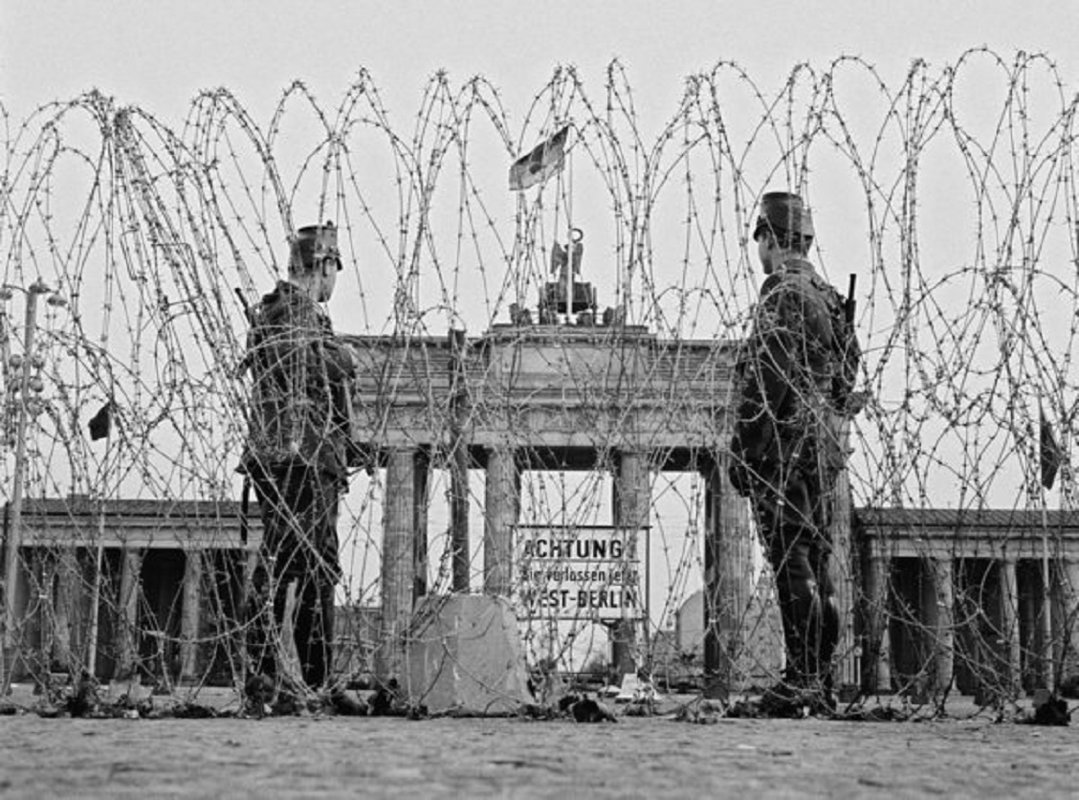 The Brandenburg Gate dividing East and West Berlin.Two
days after sealing off free passage between East and West Berlin with
barbed wire, East German authorities begin building a wall the Berlin
Wall to permanently close off access to the West. For the next 28 years,
the heavily fortified Berlin Wall stood as the most tangible symbol of
the Cold War–a literal “iron curtain” dividing Europe.The
end of World War II in 1945 saw Germany divided into four Allied
occupation zones. Berlin, the German capital, was likewise divided into
occupation sectors, even though it was located deep within the Soviet
zone. The future of Germany and Berlin was a major sticking point in
postwar treaty talks, and tensions grew when the United States, Britain,
and France moved in 1948 to unite their occupation zones into a single
autonomous entity–the Federal Republic of Germany (West Germany). In
response, the USSR launched a land blockade of West Berlin in an effort
to force the West to abandon the city. However, a massive airlift by
Britain and the United States kept West Berlin supplied with food and
fuel, and in May 1949 the Soviets ended the defeated blockade.
The Brandenburg Gate dividing East and West Berlin.Two
days after sealing off free passage between East and West Berlin with
barbed wire, East German authorities begin building a wall the Berlin
Wall to permanently close off access to the West. For the next 28 years,
the heavily fortified Berlin Wall stood as the most tangible symbol of
the Cold War–a literal “iron curtain” dividing Europe.The
end of World War II in 1945 saw Germany divided into four Allied
occupation zones. Berlin, the German capital, was likewise divided into
occupation sectors, even though it was located deep within the Soviet
zone. The future of Germany and Berlin was a major sticking point in
postwar treaty talks, and tensions grew when the United States, Britain,
and France moved in 1948 to unite their occupation zones into a single
autonomous entity–the Federal Republic of Germany (West Germany). In
response, the USSR launched a land blockade of West Berlin in an effort
to force the West to abandon the city. However, a massive airlift by
Britain and the United States kept West Berlin supplied with food and
fuel, and in May 1949 the Soviets ended the defeated blockade.
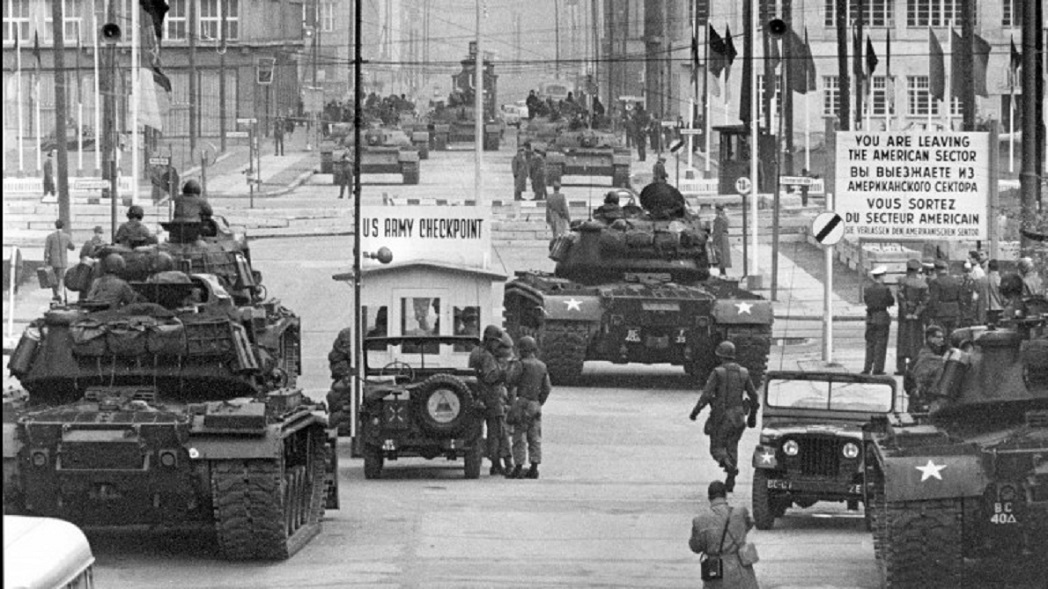 The
Grand Alliance could not agree on a permanent united German state, and
so the temporary zones of occupation had been created. Stalin was
concerned that the Western powers would force the creation of a single
capitalist Germany, by joining their zones together and overpowering the
East. As a result, the first major crisis of the Cold War was over the
future of Germany. Conflicting policies The USA, Britain and France knew
that Germany would have to be supported economically if communism was
to be resisted. The allies wanted a strong, democratic Germany acting as
a buffer against the communist states of Eastern Europe. In contrast,
Stalin wanted to: weaken Germany as a punishment for the war; help
rebuild the USSR by stealing German industrial technology; make
communism seem more attractive to the Germans. These conflicting
policies soon led to a crisis in international relations.
The
Grand Alliance could not agree on a permanent united German state, and
so the temporary zones of occupation had been created. Stalin was
concerned that the Western powers would force the creation of a single
capitalist Germany, by joining their zones together and overpowering the
East. As a result, the first major crisis of the Cold War was over the
future of Germany. Conflicting policies The USA, Britain and France knew
that Germany would have to be supported economically if communism was
to be resisted. The allies wanted a strong, democratic Germany acting as
a buffer against the communist states of Eastern Europe. In contrast,
Stalin wanted to: weaken Germany as a punishment for the war; help
rebuild the USSR by stealing German industrial technology; make
communism seem more attractive to the Germans. These conflicting
policies soon led to a crisis in international relations.
THE BERLIN CRISIS ( 1948–1961)
Ever
since the Yalta Conference, it had been clear that Berlin was going to
be a flashpoint in the Cold War, and this came to a head in 1948.After
the end of World War II in Europe, what remained of pre-war Germany
west of the Oder-Neisse line was divided into four occupation zones,
each one controlled by one of the four occupying Allied powers: the
United States, the United Kingdom, France and the Soviet Union. The
capital of Berlin, as the seat of the Allied Control Council, was
similarly subdivided into four sectors despite the city's location,
which was fully within the Soviet zone.Within
two years, political divisions increased between the Soviets and the
other occupying powers. These included the Soviets' refusal to agree to
reconstruction plans making post-war Germany self-sufficient and to a
detailed accounting of the industrial plants, goods and infrastructure
already removed by the Soviets. Britain, France, the United States and
the Benelux countries later met to combine the non-Soviet zones of the
country into one zone for reconstruction and to approve the extension of
the Marshall Plan.Once
the wall went up in 1961 life for East Berlin began to improve under
the communist system. People had excellent healthcare facilities and
free public transport. They enjoyed full employment, food and rents.
Factory outputs also increased in the 1960s. Many East Germans believed
that communism was fairer than capitalist West German. They were proud
of their achievements.However,
they lacked some key freedoms including freedom of speech, the ability
to vote and they were not allowed to leave East Berlin and travel to the
West. This chapter outlines the advantages and disadvantages of the
communist system in East Berlin.The standoff at Checkpoint
Charlie: Soviet tanks facing American tanks, 1961.In October 1961,
border disputes led to a standoff and for 16 hours the world was at the
brink of war while Soviet and American tanks faced each other just 300
feet (100 meters) apart. On August 1961 Washington and its British and
French allies had failed to prevent the Soviets building the Berlin
Wall. On October 27, after several days of escalating U.S. rebuffs to
East German attempts to get American officials to show identification
documents before entering East Berlin (thus indirectly acknowledging
East German sovereignty, rather than Soviet occupation authority) ten
U.S. M-48 tanks took up position at Checkpoint Charlie.There they stood,
some 50 meters from the border, noisily racing their engines and
sending plumes of black smoke into the night air. Alarmed by the
apparent threat, Moscow, with the approval of the Soviet leader, Nikita
Khrushchev, sent an equal number of Russian T55 tanks rumbling to face
down the Americans. They too ground to a halt some 50 meters from the
East/West Berlin. This was the culmination of several days escalation of
actions on both sides and the face-off of the Soviet and American
tanks, with guns uncovered, the first (and only) such direct
confrontation of U.S. and Soviet troops.General Clay of the American
troops was reminded by Washington that Berlin was not so “vital” an
interest to be worth risking a conflict with Moscow. President Kennedy
approved the opening of a back channel with the Kremlin in order to
defuse what had blown up. As a result, the Soviets pulled back one of
their T55s from the eastern side of the border at Friedrichstrasse and
minutes later an American M48 also left the scene. Soon the rest of the
Soviet tanks withdrew, followed shortly by reciprocal withdrawal of the
U.S. tanks.Khrushchev
had been equally uninterested in risking a battle over Berlin. In
return for Kennedy’s assurance that the west had no designs on East
Berlin, the Soviet leader tacitly recognized that allied officials and
military personnel would have unimpeded access to the East German
capital.The Berlin crisis arose from what one may term “objective
factors” – the fact that West Berlin was an anomalous Western enclave
well to the east of the Iron Curtain, precipitating a clash of concrete
interests of the Soviet Union and the West. The confrontations of armed
tanks facing off at Checkpoint Charlie is, however, an excellent
illustration of how “subjective factors” such as differing perceptions
and beliefs of the two sides also contributed to tension – and could
even have precipitated war.By the end of World War II, the Soviet armed forces had swelled to
about 11.4 million officers and soldiers, and the military had suffered
about 7 million deaths. At that point, this force was recognized as the
most powerful military in the world. In 1946 the Red Army was
redesignated as the Soviet army, and by 1950 demobilization had reduced
the total active armed forces to about 3 million troops. From the late
1940s to the late 1960s, the Soviet armed forces focused on adapting to
the changed nature of warfare in the era of nuclear arms and on
achieving parity with the United States in strategic nuclear weapons.
Conventional military power showed its continued importance, however,
when the Soviet Union used its troops to invade Hungary in 1956 and
Czechoslovakia in 1968 to keep those countries within the Soviet
alliance system.The end of World War II saw the Soviet Union emerge as one of the
world's two great military powers. Its battle-tested forces occupied
most of Eastern Europe. The Soviet Union had won island holdings from
Japan and further concessions from Finland (which had joined Germany in
invading the Soviet Union in 1941) in addition to the territories seized
as a consequence of the Nazi-Soviet Nonaggression Pact. But these
achievements came at a high cost. An estimated 20 million Soviet
soldiers and civilians perished in the war, the heaviest loss of life of
any of the combatant countries. The war also inflicted severe material
losses throughout the vast territory that had been included in the war
zone. The suffering and losses resulting from the war made a lasting
impression on the Soviet people and leaders that influenced their
behavior in the postwar era.The
USSR officially ceased to exist on 31 December 1991. The collapse of
the Soviet.Union in December 1991 changed the world’s geopolitical
balance. When the Soviet Union fell, it ended the tenure of a superpower
with the resources of more than a dozen countries. The fall left its
largest component, Russia, unable to wield anything like the global
clout that the Soviet Union had for decades. The concluding drama of the
Cold War the collapse of communism in the Soviet Union and Eastern
Europe and the end of the four-decade-old East-West conflict unfolded
in three acts between 1989 and 1991.The
Bolshevik Revolution triumphed on 07 November 1917 (October 25 old
calendar), when the Bolsheviks dispersed the Provisional Government from
the Winter Palace in Petrograd. On 03 March 1918, Soviet government
officials signed the Treaty of Brest-Litovsk, relinquishing Poland, the
Baltic lands, Finland, and Ukraine to German control and giving up a
portion of the Caucasus region to Turkey. And the monarchical cause was
effectively killed when Communists shot the imperial family in July
1918.Anti-Soviet
popular uprisings began in Budapest and spread throughout Hungary in
the autumn of 1956. On November 2, Hungarian Premier Imre Nagy, who had
already promised the Hungarians free elections, denounced the Warsaw
Pact and asked for United Nations support. On November 4, Soviet forces
moved into Hungary and suppressed the revolt. Soviet, Polish, East
German, Bulgarian, and Hungarian troops invaded Czechoslovakia on 20
August 1968, and deposed the reformist government of Alexander Dubcek,
who had begun a program of economic and political liberalization (the
"Prague spring")Mikhail
S. Gorbachev entered office in March 1985 determined to scrap old
assumptions about Soviet foreign policy. He had drawn lessons from the
return of Cold War tensions in the early 1980s and they scared him. The
"old thinking" believed that the USSR would emerge victorious in the
Cold War if it continued building up its arsenal and fostering
"progressive" regimes in the Third World in places like Angola,
Ethiopia, and especially Afghanistan. Gorbachev's "new thinking" sought
to reorganize and revitalize the Soviet system; but to do so required a
favorable international situation to relieve the material burden of arms
competition with the West. On
09 November 1989, the East German Government opened the Berlin Wall.
East Germany, the center of contention throughout the Cold War, was
united with West Germany and integrated into NATO. As one historian
noted, in Poland communism took ten years, in Hungary ten months, in
East Germany ten weeks, and in Czechoslovakia ten days to disappear. In
Romania the bloody exception to the rule of peaceful transition the end
came with the execution of Nicolae Ceausescu and his wife on Christmas
Day. The collapse of the Warsaw Pact a year later plus the 1990 Treaty
on Conventional Armed Forces in Europe [that substantially reduced
Soviet superiority in conventional forces in Europe] resulted in a
stronger Western alliance.The
third and final act closed with the 1991 dissolution of the USSR. By
1989 Gorbachev's domestic reforms had run into serious trouble, and the
economy went into a tailspin. The centrifugal forces in the "outer
empire" stimulated and accelerated those in the "inner empire", as the
Soviet republics sought sovereignty and then independence. As the center
disintegrated and Gorbachev opened up the political process with
glasnost (openness), the old communist "barons" in the republics saw the
handwriting on the wall and became nationalists; they "first of all
attacked the USSR government and subsequently destroyed the USSR." Asked
when he decided to secede from the USSR, Ukrainian party boss Leonid
Kravchuk replied: "1989" [he did so in mid-1990]. Each of the USSR's
republics, as they declared independence or sovereignty, also adopted
statements by the republic leaderships on service in the armed forces,
including the creation of their own military forces.The Soviet Union also began exerting its influence in Asia. Outer
Mongolia became the first Communist regime outside of the Soviet Union
in 1945 when it taken over by a Soviet puppet government. China became
Communist in 1949.
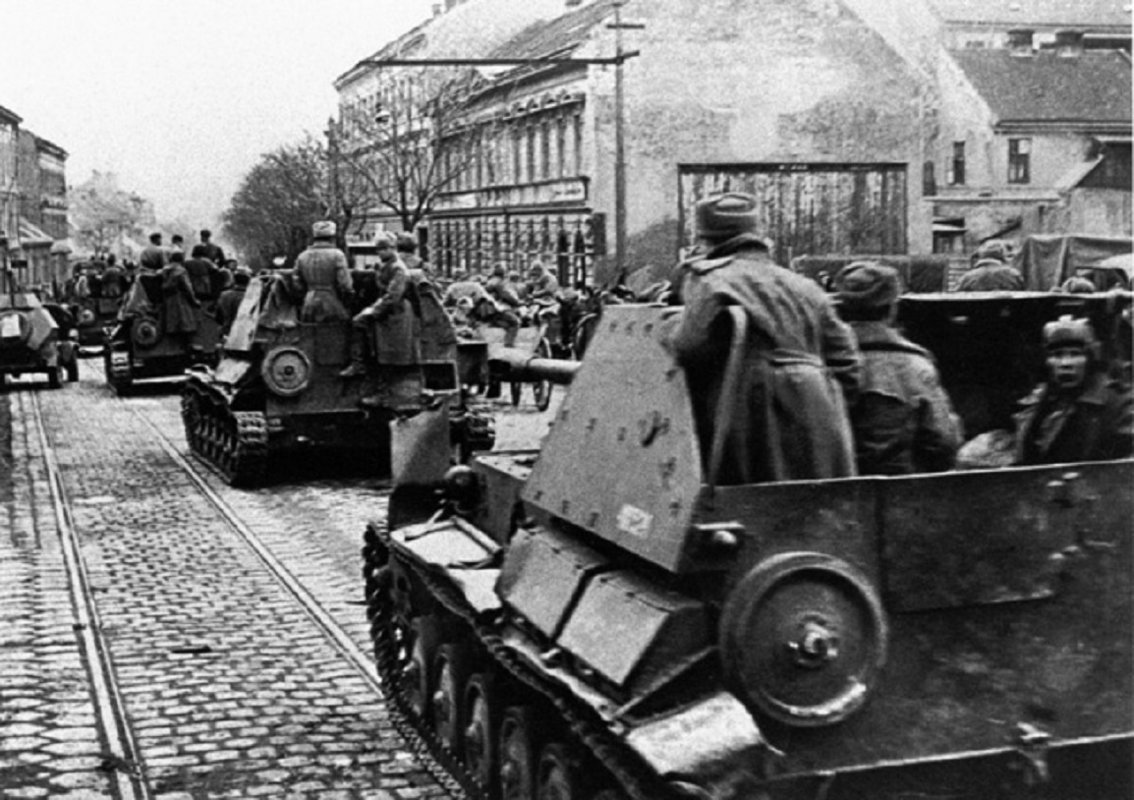 A Soviet red army victory at Vienna,in spite of a tenacious defense,
the Soviet Red Army overwhelmed the Germans in the Austrian capital of
Vienna.The
might of the Red Army prevailed in the battle for Vienna in the spring
of 1945. Soviet soldiers and their supporting self-propelled assault
guns maneuver through the suburbs of the Austrian capital city in April.
A Soviet red army victory at Vienna,in spite of a tenacious defense,
the Soviet Red Army overwhelmed the Germans in the Austrian capital of
Vienna.The
might of the Red Army prevailed in the battle for Vienna in the spring
of 1945. Soviet soldiers and their supporting self-propelled assault
guns maneuver through the suburbs of the Austrian capital city in April.
In mid-March 1945, the Joseph Stalin’s Soviet Red Army launched a major offensive with the aim of clearing Axis forces out of Hungary and forcing them back to the very borders of Hitler’s Greater German Reich. It was successful, and at 1925 hours on the 29th a “Führer Decision” finally arrived at the headquarters of Army Group South authorizing a phased withdrawal to what was called the Reichsschutzstellung the Reich Guard Position.This position followed the approximate line of Austria’s eastern border. Four days later, on April 2, Waffen SS General Sepp Dietrich, the commander of the Sixth Panzer Army, was presented to the people of Vienna as their “defender,” and over the next two days a number of his battered formations, notably the 2nd SS Panzer Division Das Reich, pulled back in chaotic conditions toward what had inevitably been designated Fortress Vienna. The withdrawal was complicated by roads jammed with miscellaneous German and Hungarian troops and hordes of civilians all desperately trying to reach what they thought might be a place of safety.Soviets Pushing Toward the Danube,by April 4, Das Reich, with a Kampfgruppe (battlegroup) from the 3rd SS Totenkopf Division on its left flank in the area of the Vienna airport, had been forced back to a line running roughly between the villages of Mödling and Achau. There it was tasked with preventing a Soviet advance along the main roads leading into Vienna from Wiener Neustadt and Sopron. But it was now clear that the Soviets were also beginning to push northwest toward the Danube River valley in the area of Tulln with the intention of outflanking and isolating the Austrian capital. Das Reich’s commander, SS Colonel Rudolf Lehmann, had little option other than to prepare to withdraw his Kampfgruppen into the city itself.That same day, General Rudolf von Bünau was appointed commandant of the city of Vienna, and 24 hours later Lehmann received an order said to have come from the Führer himself, which ended: “From now on there is to be no more retreating.” By this time, however, his men, despite intense fighting, had been forced back some two and a half miles across flat, open ground to a low ridge running from Vösendorf to Leopoldsdorf. There they occupied temporary positions on a reverse slope.Some extraordinary events had occurred during the withdrawal toward and into Vienna. Some 2,800 men intended for the 12th SS Panzer Division Hitlerjugend but unable to reach that division had been quickly absorbed into Das Reich, and a reinforcement unit made up of convalescents, leave personnel, and replacement troops was quite literally taken off trains passing through Vienna and found itself in action under Lehmann’s command in the Piesting River sector.In the same way, individual replacements arriving on April 3 had been quickly integrated, but according to SS Lt. Col. Otto Weidinger, the commander of the Division’s 4th SS Panzergrenadier Regiment Der Führer, it was no longer possible even to take down the names of these men. Losses were being recorded in numbers rather than names. He also recorded that just before the final withdrawal into the city most of Das Reich’s artillery was intact, but that the panzergrenadier regiments amounted to only “five average battalions” and the division had only 60 percent of its authorized motor transport.At 2000 hours on April 5, Lehmann gave orders for a further withdrawal to the high ground behind the Liesing River, running from Mauer through Altmannsdorf to the area of Inzersdorf. This new position was within the city limits of Vienna itself, and soon after occupying it the men, and particularly the officers of the division, began to run into new problems.At 0730 hours on April 6, the Soviets launched a major assault on the German positions. It has been said that this attack was due to coincide with an attempt by the Austrian resistance movement to hand over the city to the Soviets. In any event, the attempt failed. The leaders of the movement had clearly not calculated on the presence of the men of the Waffen SS.During the 6th, Das Reich’s 2nd SS Reconnaissance Battalion, under the command of Major Ernst Krag, pulled back through the division’s lines to the area around the Floridsdorf Bridge across the Danube. This vital bridge, which was to become the focus of the fighting in the last hours of the battle for Vienna, was already under observation from Soviet troops on the Kahlenberg feature in the northwestern part of the city.By the evening of the 6th, Das Reich, which was no longer fighting as a division but in small-unit groups, had been forced back to a line just south of the Schönbrunn Palace and extending west to the Hietzing sector of the city. Some of its tanks and certainly the 10th SS Heavy Battery had taken up positions in the palace grounds. Another battery, the 12th, was in position on Prater Island between the Danube and the Danube canal. One of the 10th Battery officers later described how they were shooting directly over the gloriette toward the south and how one gun was positioned in the middle of the three main entrances to the palace grounds, firing toward the palace bridge to the north. He claimed the palace suffered only slight damage to the east side of the gloriette.As darkness fell on the 6th and the Russians began to threaten Prater Island from the southeast, General von Bünau, who although still city commandant had been placed under the command of SS Lt. Gen. Willi Bittrich’s II SS Panzer Corps that included Das Reich, the 3rd Totenkopf, and the 6th Panzer Divisions, gave orders for the bridges across the Danube in the eastern part of Vienna to be blown. The same night saw the enemy trying to infiltrate toward the West Station, but the deployment of a battalion of Hitlerjugend (youngsters, but not part of the Waffen SS or the 12th SS Panzer Division Hitlerjugend) put a temporary end to this threat. Nevertheless, by midnight parts of Weidinger’s Der Führer Regiment had been pushed back into the streets just to the north of the Schönbrunn Palace.
President Ronald Reagan "Tear Down This Wall" Speech at Berlin Wall.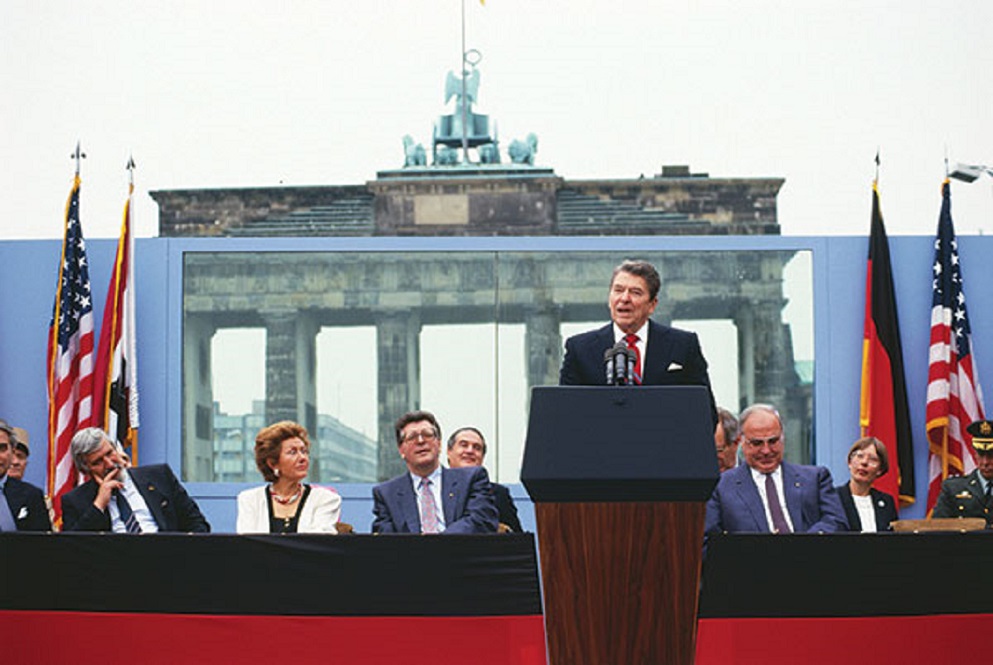 US president Ronald Reagan at Brandenburg Gate - "tear down this wall".This
speech by President Ronald Reagan to the people of Wes Berlin contains
one of the most memorable lines spoken during his presidency.
President
Reagan and Mikhail S. Gorbachev signed the first treaty
reducing the size of their nations' nuclear arsenals. The
President and the Soviet leader, beginning three days of talks aimed
at even broader reductions, pledged to build on the accord by striving
toward what Mr. Gorbachev called ''the more important goal.October 11,
1986: Ronald Reagan and Mikhail Gorbachev Meet in Reykjavik, Iceland, to
Negotiate Disarmament.
US president Ronald Reagan at Brandenburg Gate - "tear down this wall".This
speech by President Ronald Reagan to the people of Wes Berlin contains
one of the most memorable lines spoken during his presidency.
President
Reagan and Mikhail S. Gorbachev signed the first treaty
reducing the size of their nations' nuclear arsenals. The
President and the Soviet leader, beginning three days of talks aimed
at even broader reductions, pledged to build on the accord by striving
toward what Mr. Gorbachev called ''the more important goal.October 11,
1986: Ronald Reagan and Mikhail Gorbachev Meet in Reykjavik, Iceland, to
Negotiate Disarmament.
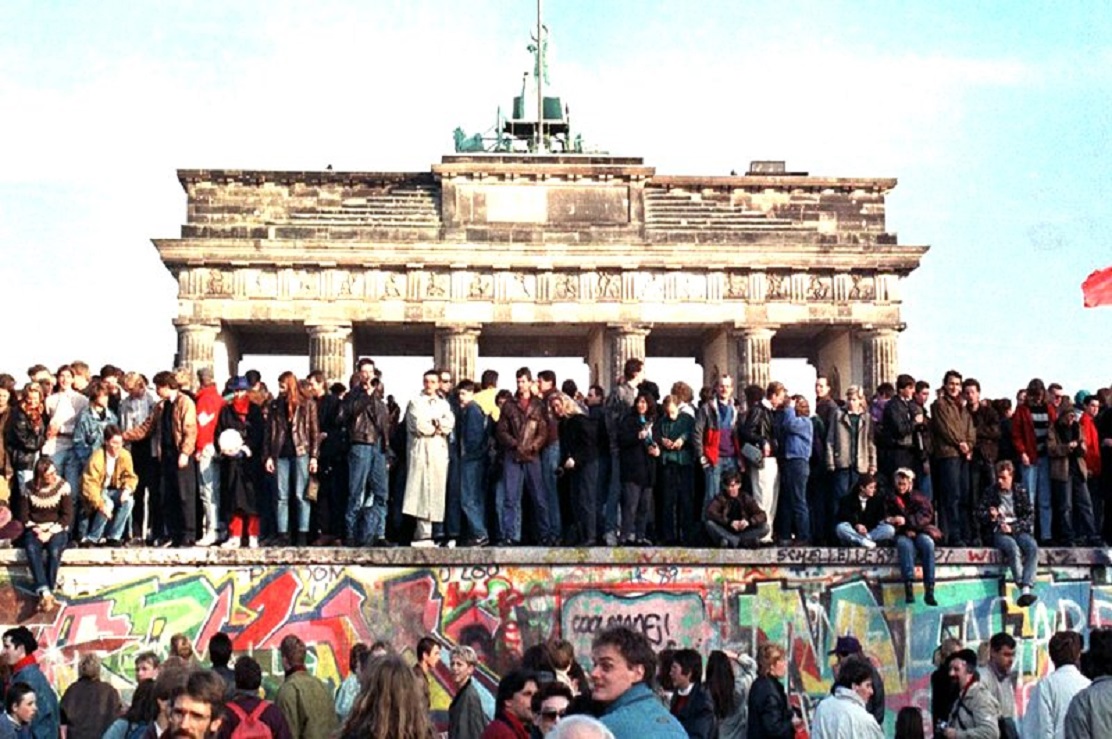 When
the Berlin Wall fell on November 9, 1989, its destruction was nearly as
instantaneous as its creation. For 28 years, the Berlin Wall had been a
symbol of the Cold War and the Iron Curtain between Soviet-led
Communism and the democracies of the West.This
same division into West and East occurred in Berlin. Since the city of
Berlin had been situated entirely within the Soviet Zone of Occupation,
West Berlin became an island of democracy within Communist East Germany.
When
the Berlin Wall fell on November 9, 1989, its destruction was nearly as
instantaneous as its creation. For 28 years, the Berlin Wall had been a
symbol of the Cold War and the Iron Curtain between Soviet-led
Communism and the democracies of the West.This
same division into West and East occurred in Berlin. Since the city of
Berlin had been situated entirely within the Soviet Zone of Occupation,
West Berlin became an island of democracy within Communist East Germany.
